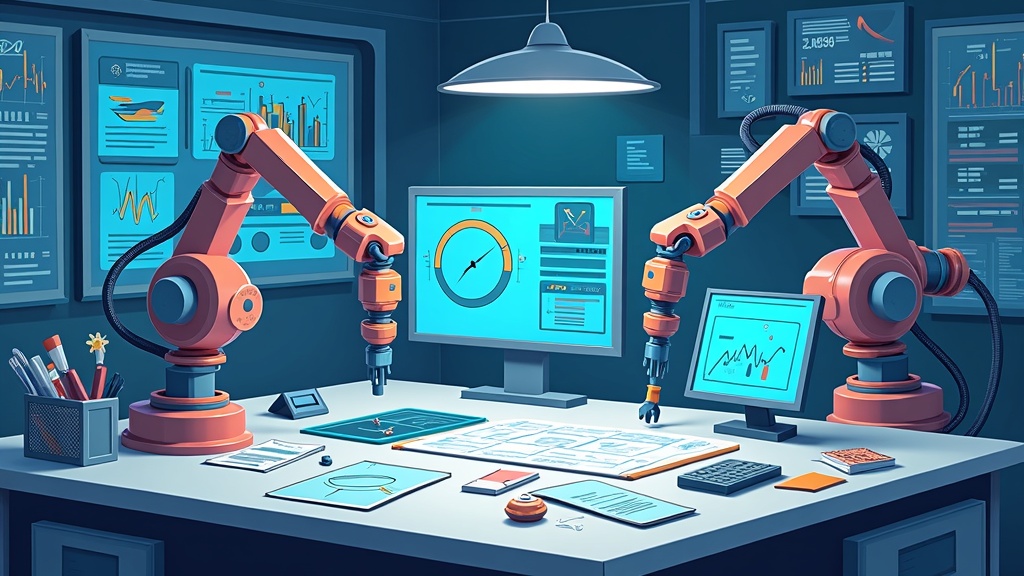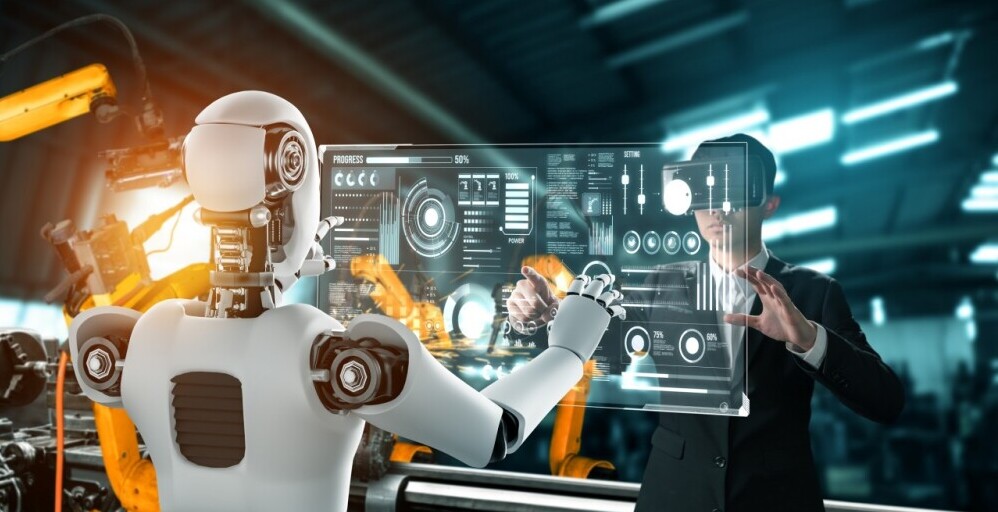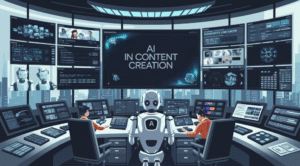Integrating Automation And Human Interaction With Ai
The relationship between automation and human interaction with AI is now a key driver for businesses wanting to remain both competitive and efficient. Automation can tackle repetitive tasks and compute data at lightning speed—much faster than any person—while people bring vital creativity, context, and empathy to the table. This unique combination paves the way for smarter workplaces and more rewarding experiences for everyone involved. It's important to check out what it really takes to blend automation with human strengths when making the most of AI.

Understanding AI-Driven Automation and Human Interaction
Combining AI and automation means letting machines take care of the routine, so humans can focus on jobs that require judgment and flexibility. For instance, an AI system can sort emails, keep schedules on track, analyze massive datasets, or look for possible risks. These are jobs that would eat up a huge chunk of time if managed by people alone. Meanwhile, issues like customer complaints, new product ideation, or deal-making always need that human spark.
But what makes this mix so valuable? Relying exclusively on automation can lead to rigid, impersonal processes. This can cause errors or result in missed details. Only using humans can slow things down and raise costs unnecessarily. When you get the balance right, AI saves time while humans handle exceptions, creativity, or anything that needs a personal approach.
Plenty of industries already see this mix in action. Healthcare is a top example: AI screens hundreds of scans for signs of disease, but a doctor steps in to make sense of results and set a treatment plan. Retail uses AI apps to suggest products through automated analysis, but a human rep helps out when the chatbot can't solve a unique issue. This blend provides faster service and a personal touch, without exhausting staff or breaking the bank.
How Organizations Can Balance Automation and Human Expertise
Companies that get the most from AI and human talent usually have specific strategies. Here are some real-world ways organizations build the right mix:
- Start With Clear Role Definitions: Lay out which tasks are best handled by automation and which need a human touch. For example, automate order tracking, but use people to handle customer feedback and complaints.
- Use Automation as an Assistant: Treat AI like an extra set of hands, giving your team the power to automate the routine while they focus on what’s high-value.
- Keep Feedback Loops Open: Let employees speak up on what’s working, and be willing to evolve your approach as you learn what’s effective.
- Invest in Training: Train employees on working with AI, emphasizing both trust in the technology, and the value of challenging it where necessary.
- Build Crossfunctional Teams: Bring together tech minds and those on the ground, ensuring solutions are practical, not just theoretical.
Businesses that strike this balance often see fewer errors, faster decisions, and teams that feel truly boosted in their roles.
Human-AI Collaboration in Practice

Pairing humans with AI at different steps in a project or job is where the real magic happens. Here’s how this partnership typically unfolds:
- AI Handles the Boring Stuff: Machines scan a mountain of documents, flagging items that need a closer look. People then step in to make the tough calls.
- People Supervise and Tune: Workers check AI outcomes, make tweaks when errors pop up, and update the rules, so the technology keeps improving.
- AI Offers Insights: By bringing up patterns buried deep in the data, AI helps people spot opportunities or challenges they might never have noticed solo.
- Humans Add Context: While AI cranks out the numbers, humans add perspective, empathy, and creativity to interpret those results.
This teamwork isn't exclusive to big businesses either. Even solo entrepreneurs or small teams can put AI-based assistants to work on scheduling, grammar checking, or inventory. People step in when the nuance or judgment is needed.
When Humans and AI Shine Together (or Alone)
Some jobs are all about teamwork, while others call for solo performances. Here’s how to spot the sweet spots:
- Great Together: Medical imaging, customized marketing, fraud spotting, and maintenance predictions all benefit from human oversight. This teamwork means lower risk and smarter decisions.
- Humans Alone: Big on culture, ethics, or deep empathy? Jobs like counseling, team leadership, or creative direction do best with people in control.
- AI Solo: Tasks needing speed and accuracy above all—like sorting mail or crunching financial data—often work best when AI runs with little interruption, though regular checks help.
Choosing between pure automation, pure human effort, or a blended approach depends on what’s at stake. If trust, safety, or complex emotion is on the line, bring in people. For predictable, high-volume work, automation is usually your best friend.
Unlocking Innovation Through Human-AI Collaboration
When people and AI team up, they set free creative possibilities neither could dream up alone. AI stirs inspiration by linking unexpected ideas in vast data pools—designers find new product features, musicians sample wild new sounds, and writers get content ideas they’d never consider. AI-powered platforms can suggest creative edits, launch trial ad campaigns, or show off test app screen designs. Humans use these to spark their own fresh ideas.
Science and research have been early adopters. AI sifts through huge reports and suggests experiment directions, and researchers shape and verify these suggestions. In journalism, AI can spot trending topics and check facts, but storytellers weave these raw facts into narratives people care about. With AI taking routine tasks off their plates, creators have more time for what really makes their work stand out.
What’s Needed for Successful Human-AI Collaboration?
This partnership runs best when a few building blocks are in place:
- Trust and Transparency: People want to see how AI comes to its conclusions. Clear dashboards and simple explanations make this easier.
- Good Communication: A smooth flow between humans and machines is key. User interfaces should feel natural, with ways to tweak controls in real time.
- Continuous Learning: Let people and AI improve together. As markets change or mistakes happen, both should adapt and get better.
- Accessible Design: These tools should be easy enough for non-experts to use. Simple menus and plain talk go a long way.
- Open-Minded Culture: See AI as a collaborator, not competition. Encouraging curiosity and a willingness to try new things pays off in the long run.
Sticking with these basics not only boosts daily workflow but keeps organizations nimble when new tech and shifting demands arrive down the line.
FAQ: Integrating Automation and Human Interaction With AI
Let’s clear up some common questions about this mix-and-match approach:
Question: What’s the combination of AI and automation, really?
Answer: AI-driven automation uses artificial intelligence to take over tasks—machines both follow rules and learn from patterns, so people are freed up for more meaningful work.
Question: What strategies help balance automation with human expertise?
Answer: Start by setting clear roles, use automation as a support tool, encourage feedback, train your teams, and bring together tech pros with field experts. This creates a high-performing, quality-focused workplace.
Question: How do humans and AI work together in real jobs?
Answer: AI takes care of the heavy data work and repetitive tasks, while humans handle exceptions or tasks that require intuition. The specific mix should always fit the goal at hand.
Question: When should humans and AI pair up, and when is one better solo?
Answer: If an outcome needs speed, let AI take the lead. When people-skills, intuition, or ethics matter most, keep humans in charge. Usually, the top results come from a mix, especially for tricky or sensitive projects.
Question: Can collaborating with AI really make us more creative?
Answer: Definitely. AI helps track down new ideas, connect the dots, or offer suggestions that people might overlook. This adds fuel to the creative fire, so humans get to break new ground.
Question: What helps humans and AI work together smoothly?
Answer: Trust, simple directions, an appetite for learning, and easy-to-use controls are must-haves for a successful partnership.
Blending automation with human know-how lets organizations pump up efficiency, spark creativity, and level up experiences for everyone. As tech keeps moving forward, the greatest gains will go to those who make the most of people and machines teaming up—instead of choosing one or the other.


